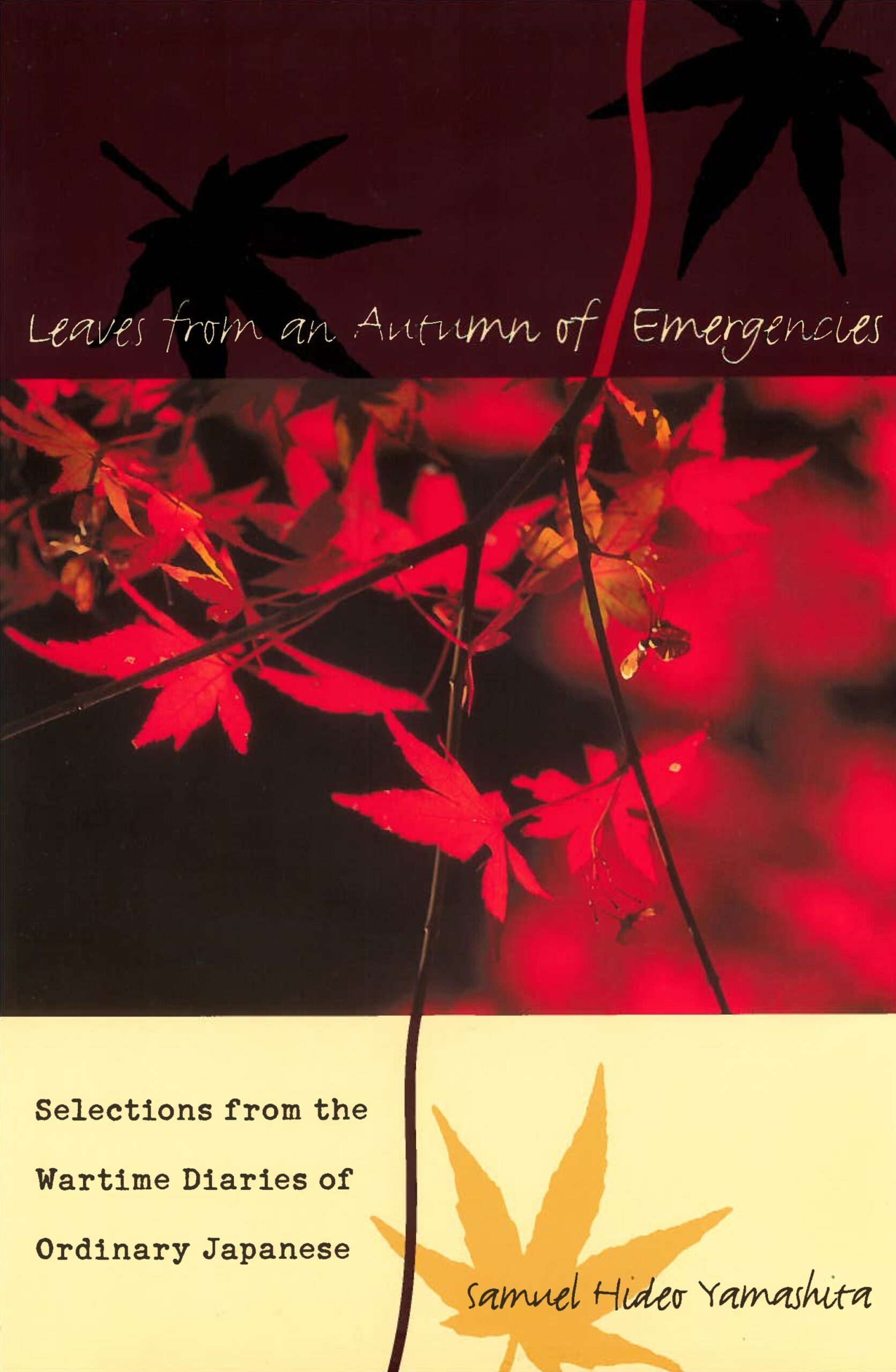Leaves from an Autumn of Emergencies: Selections from the Wartime Diaries of Ordinary Japanese
- About the Book
-
The fall of Singapore and the brilliant victories achieved since the start of the war mean we are protected, but I don’t know just how grateful I should be. —Takahashi Aiko, housewife, February 1942
This is my final departure from the home islands. I have paid my respects to those who have helped me. I have no regrets. —Itabashi Yasuo, navy kamikaze pilot, February 1944
We had rice gruel for lunch again. There was no tofu in it, but there were potatoes…. We went through with the closing ceremony and received our report cards. Everyone was there. From now on, I’ll persevere and not fail. —Manabe Ichiro, primary school student, July 1944
This collection of diaries gives readers a powerful, firsthand look at the effects of the Pacific War on eight ordinary Japanese. Immediate, vivid, and at times surprisingly frank, the diaries chronicle the last years of the war and its aftermath as experienced by a navy kamikaze pilot, an army straggler on Okinawa, an elderly Kyoto businessman, a Tokyo housewife, a young working woman in Tokyo, a teenage girl mobilized for war work, and two schoolchildren evacuated to the countryside. Samuel Yamashita’s introduction provides a helpful overview of the historiography on wartime Japan and offers valuable insights into the important, everyday issues that concerned Japanese during a different and disastrously difficult time.
- About the Author(s)
-
Samuel Hideo Yamashita, Author
Samuel Hideo Yamashita is the Henry E. Sheffield Professor of History at Pomona College.
- Reviews and Endorsements
-
- Outstanding. . . . There can never be a perfect window into the war, but Yamashita’s skillful selection of diaries and his faithful and humane translation brings to life a range of Japanese experiences that will both broaden and complicate any discussion of what it meant to live through the Second World War in Japan.
—Education about Asia - Enhances our understanding of the social history of wartime Japan. Perhaps its greatest value in the classroom is that the diaries enable English-speaking readers, many of whom will be residents of countries that fought Japan in the war, to put themselves in the shoes of others and to see the war briefly through Japanese eyes. It is a testament to Yamashita’s skill and hard work that his book succeeds so well as a means of broadening horizons and provoking thought.
—American Journal of Education - Yamashita’s volume, drawing on correspondence and conversation with the families of the diarists, is carefully researched, annotated, and illustrated with photographs. . . . [This book] should help considerably in advancing the urgent project of defining and assessing responsibility, not only for Japan but for all combatants, and not only for World War II but for all conflicts and modes of political violence.
—Journal of Japanese Studies - The individual stories . . . are involving in their own right, but they also convey a feel for changing popular attitudes to the war, the mechanisms of social control and wartime logistics, the effects of bombing on everyday life and social structures, and other aspects of social history.
—www.dannyreviews.com - Writing diaries was an old Japanese tradition. During the war, diaries of soldiers and pupils were inspected by their officers and teachers. Nevertheless, as Yamashita points out, the writers of these diaries were not afraid to reveal their feelings even when these clashed with the official line.
—Monumenta Nipponica - The diaries reveal a far richer variety of attitudes toward the war than previous works have shown us; they reveal a thoughtfulness and a down-to-earth approach to life that will surprise those reared on wartime stereotypes. They will be of interest to all students, both scholars and general readers of World War II and wartime Japan.
—James Huffman, Wittenburg University
- Outstanding. . . . There can never be a perfect window into the war, but Yamashita’s skillful selection of diaries and his faithful and humane translation brings to life a range of Japanese experiences that will both broaden and complicate any discussion of what it meant to live through the Second World War in Japan.
- Supporting Resources
-





